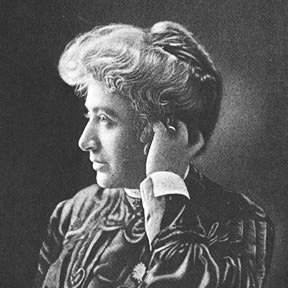
Principal
1898 – 1860
Founder Thomas May Peirce famously stated in 1893 that “The door of Peirce College has been opened for women, and it remains open, and it will never be shut again.”
Dr. Peirce was referring to the school’s pioneering efforts to make business education curriculums available to women, but it wasn’t just female students who passed through the door he first opened in 1865. Only five years after he made that statement, his eldest daughter, Mary B. Peirce, became principal of what was then known as Peirce School, and she proudly held the position for 62 years until her passing in February of 1960. During her tenure, Mary had the honor of overseeing some of the most prosperous years in Peirce College’s impressive 150-year history of educating working adults.
Mary was a graduate of the Philadelphia High School for Girls and Dickinson College, though she had little in the way of formal teaching or business experience when she assumed the role of school principal. Well aware of the many prejudices society held against women at the time, she was initially reluctant to take the job, but she found a little encouragement from two prominent Philadelphia businessmen: John Wanamaker and Boise Penrose. It was just the push she needed to take over running the school near the end of the 19th century and continue its trend of success.
For the 30 years from 1870-1900, American business and Peirce School had seen tremendous growth, and the world was taking notice. Mary relied heavily on the advice of the leaders her father had put in place in the early years, and her trust paid off as Peirce took home a silver medal and a diploma at 1899’s National Export Exposition in Philadelphia. The following year the school was awarded a gold medal at the Universal Exhibition at Paris “in recognition of its pioneer work in business education and its influence among business leaders at the turn of the century.”
His first act was to hire William J. Hamilton, who boasted an impressive background in commercial education, as the school’s dean. Then, to address the changes that the technology and business worlds saw in the 1950s, he set about creating a new curriculum. That which Mary had established in the ‘20s and ‘30s had served the school well in the past, but now it was time to look towards the future.
Thomas May established specialized certificate programs in its secretarial programs; adopted a formal college credits program; improved the school’s academic standing by joining the Business Education Associates as a member institute; and managed to get Peirce full accreditation as one of the country’s first Junior Colleges of Business.
It was often said that, in accordance with his naval background, Thomas May “ran a tight ship.” It was not uncommon for him to work several days straight, roaming the school’s halls after midnight and leaving voluminous notes for staff members to go over the next morning.
Obsessed with pushing the school towards ever greater success and innovation, Thomas May introduced what was reputed to be the “first Business Data Processing educational program in the Eastern United States” in 1959.
Before handing leadership duties off to Dr. Raymond C. Lewin in 1981, Thomas May also successfully converted the college into a non-profit institution and achieved Middle States Association of Colleges and Secondary Schools (3624 Market Street, Philadelphia, Pennsylvania, 19104, 267-284-5000) accreditation for it in 1971.
Upon his retirement in 1981, Thomas May told students that he was “leaving your College in good hands” by placing Dr. Lewin, the school’s first non-Peirce family leader, in charge of it.
1608 Walnut Street, Suite 1900, Philadelphia, PA 19102 | 215.545.6400 | Privacy Statement | Site Map | Consumer Information